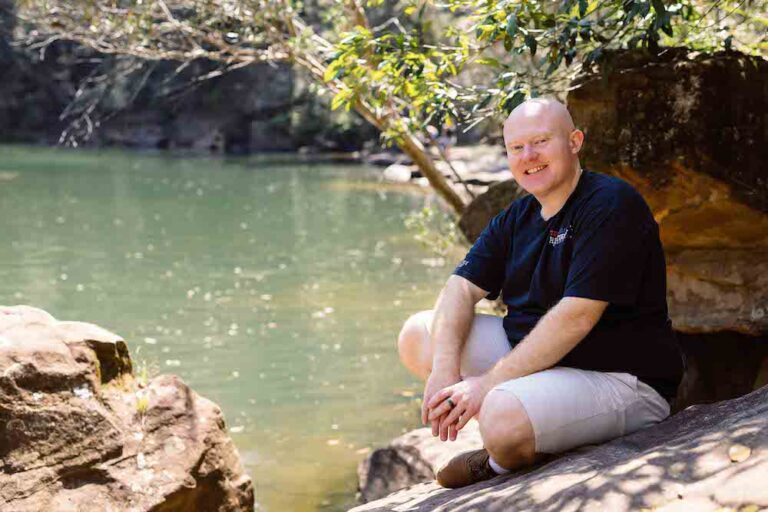Dr Barbara Fredrickson, the Principal Investigator of the Positive Emotions and Psychophysiology Lab at the University of North Carolina, Chapel Hill, along with other positive psychologists, has conducted research showing that positive emotions do far more than make you feel good.
Increasing positive emotions creates an upward spiral that not only leads to greater future positive emotions but also has a multitude of other benefits. People who experience a positivity ratio of 3:1 are more creative, flexible, optimistic, accepting and purpose driven. They have better social relationships and physical health and are more resistant to developing psychological problems when they experience negative life events.
Research by Dr Sonja Lyubomirsky, Professor of Psychology at the University of California, Riverside, suggests that your degree of happiness is 50% determined by genetics, 10% by life circumstances and 40% by intentional activity. What that means is some people need to work harder than others to experience a positivity ratio of 3:1, but it’s possible that everyone can.
The How of Happiness
For the past 20 years Dr Lyubomirsky has sought to answer the question, “Is it possible to become lastingly happier and, if so, how?” Her answer is yes, it is possible – with constant work. While Dr Lyubomirsky has found that some people are genetically wired to have a sunny disposition, and that 10% of happiness is dependent on life circumstances (such as wealth, health and relationships), your degree of happiness is significantly affected by your intentional activities.
“An unhappy person can become a great deal happier, but he or she would do well to scrutinise carefully what precise behaviours and activities happy people choose to engage in,” Dr Lyubomirsky suggests. “Also, people tend to adapt to what makes them happy,” she said. “For example, people, on average, get a boost when they’re first married, but this may last for only two years and then they go back to their happiness baseline.”
Happiness Strategies
To increase your positive emotions, first decide what specific emotions you most want to enhance. Calmness and serenity? Fun and amusement? Hope and optimism? Pride and confidence? Deciding on the positive emotions you specifically want to target will help you to choose an effective happiness strategy. Increasing feelings of peace, for example, requires a different strategy than increasing confidence.
Next, write down 15 ways that you could increase your opportunities to experience those specific emotions. This will help you create a broader range of strategies to try. From your list choose the one idea that seems most interesting to you and try it.
Some of the most well-researched techniques for increasing positive emotions include mindfulness meditation, spending time in nature, physical exercise, developing closer relationships and imagining a positive future. Dr Lyubomirsky’s research has also found that regularly expressing gratitude for what you have, performing acts of kindness several times a week and cultivating optimism are all ways to boost and sustain happiness.
Because there is no single strategy that works for every individual, you’ll need to self-experiment to find a method that’s a good fit for you. Strategies can also wear off, so try new strategies from time to time.
Banishing Negativity
Many strategies for increasing positive emotions will also work for decreasing negative ones. This includes:
● Learning to dispute negative thoughts (cognitive behavioural therapy (CBT), for example, is one type of therapy that has had success in helping people to change the way they think)
● Reducing gossip and sarcasm
● Assessing your media diet and reducing your intake of negatively toned news, information and entertainment
● Understanding and addressing your “negativity landmines”, the situations or thoughts that most often trigger your negative emotions.
Transcending Adversity
In some tragic circumstances positive emotions just might not seem possible. After Ingrid Poulson’s estranged husband killed their two young children and her father in 2003, she dedicated herself to inspiring others to transcend adversity through resilience. Her book, Rise (2008), is about how to respond when the worst thing that can happen in life occurs. Poulson’s advice for rising above adversity includes:
● Life goes on. “This statement may seem droll, perhaps a little heartless,” she says, “but the truth is we can survive the most incredibly challenging things.”
● “Why?” is the wrong question. Asking why won’t get you anywhere. “Instead of looking at what was, we need to focus on what is,” she suggests.
● Take care of the details. “Resilience,” she says, “is built through the small steps we take, the practical everyday ways that we add value to our lives.”
Change for the better
Buddhist nun Ven. Robina Courtin is the founder of Liberation Prison Project, which supports the spiritual practice of thousands of people in US and Australian prisons. She believes we all have the potential to change for the better and become happier, wiser and kinder people.
According to Courtin, the good qualities at the core of our being are what define us, while the negative qualities are like additives that can be removed. “When you check beneath emotions such as anger, you will often find something else going on, but we are often not taught how to identify and change emotions,” she says.
“We all have the potential to develop happiness and lessen suffering,” she adds. “External conditions play a major role in your life, but as long as you think they play the main role you’ll be the victim, hopeless and paralysed.”
Meditation is the tool recommended by the Buddhist philosophy to help change yourself for the better. “Sit down for five minutes and then focus your mind on the sensation of the breath,” Courtin advises. “Every time your mind wanders, bring it back to your breath. You’re training yourself to keep your mind focused on what you want it to focus on, rather than it just being dragged along from pillar to post.”
Discover more simple ways to be happy and read about the science of negative thinking.







